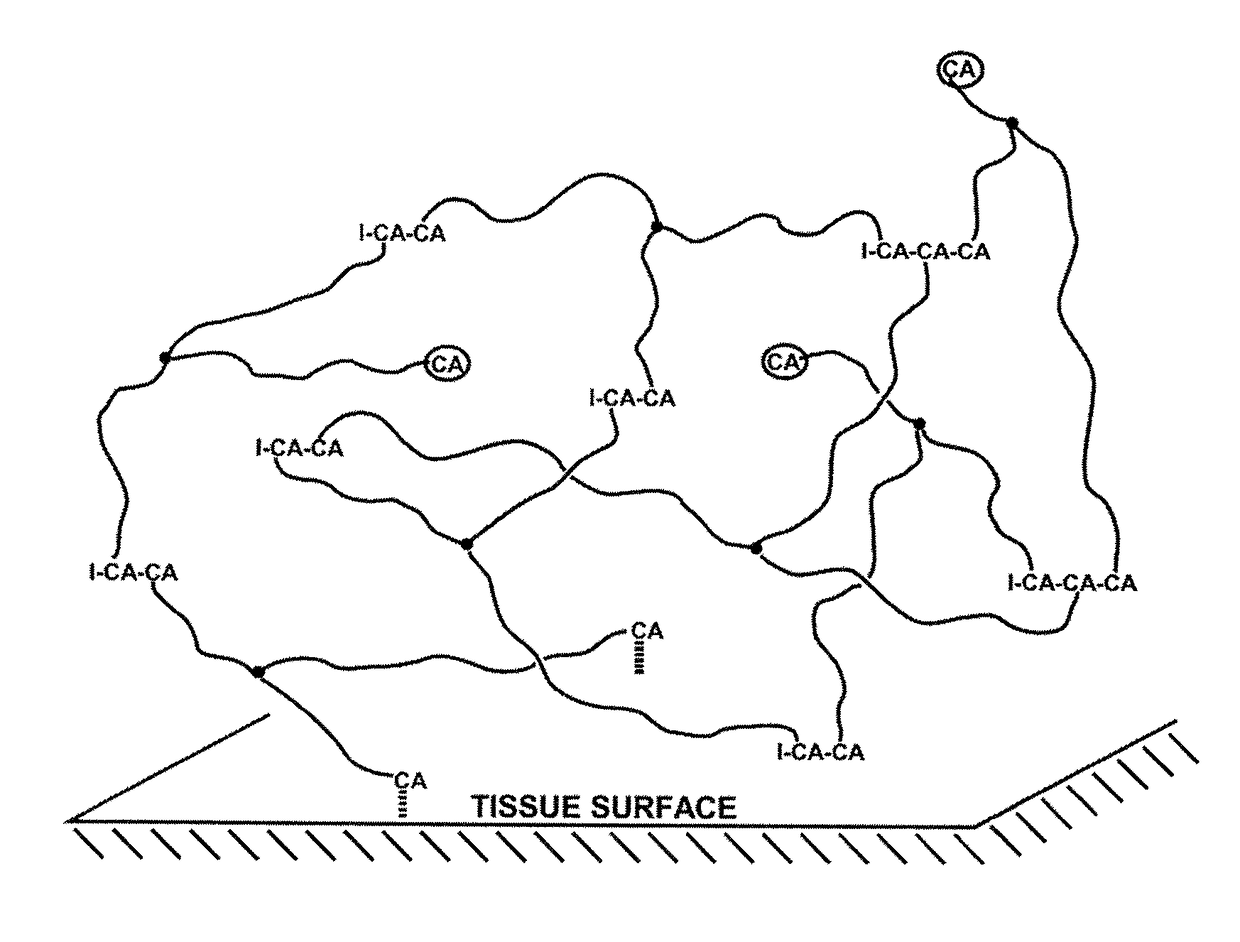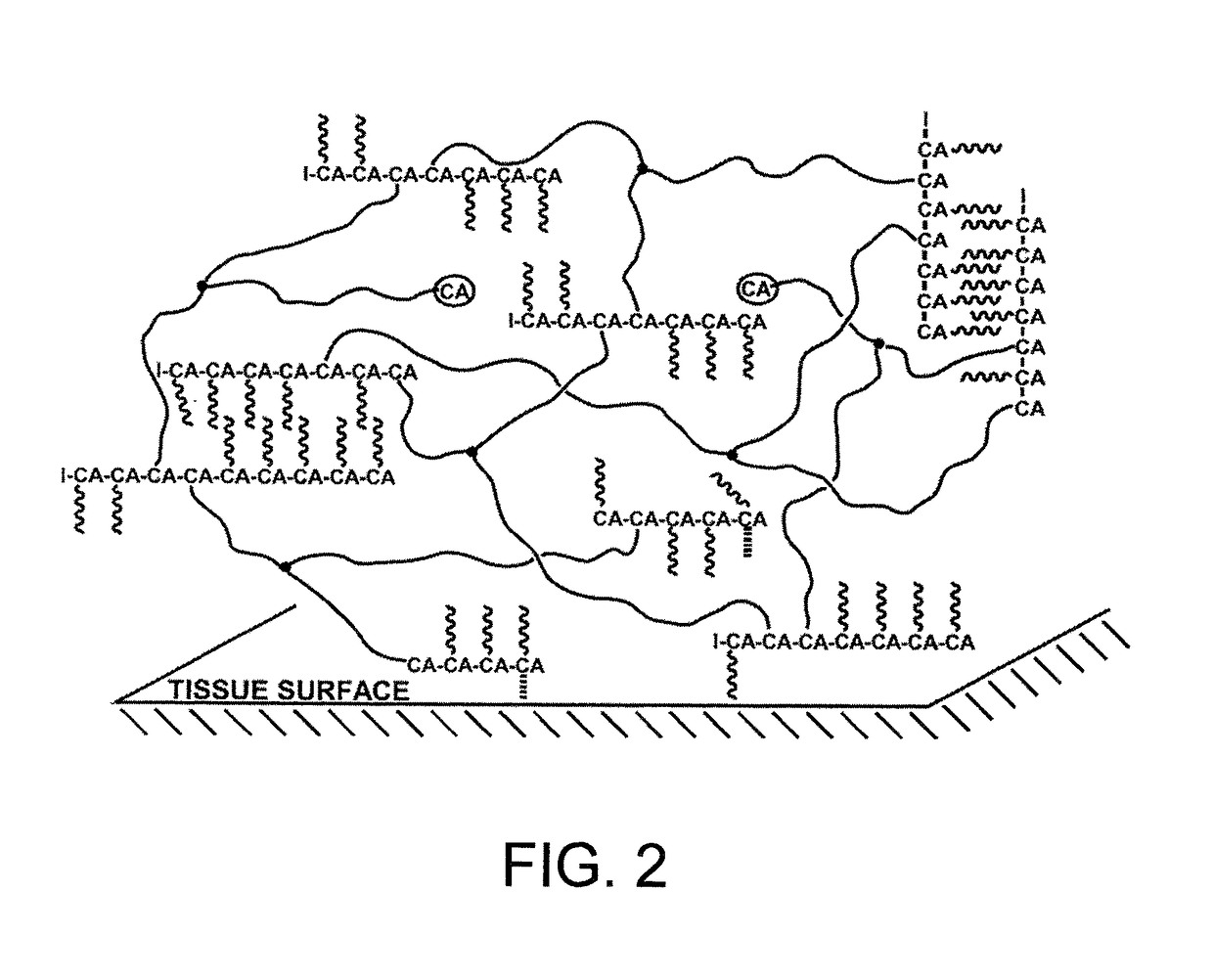Method for the production of poly(2-octyl cyanoacrylate)-polyisobutylene co-network, and super initiators therefor
a technology of polyisobutylene and polyisocyanoacrylate, which is applied in the direction of surgical adhesives, tissue regeneration, surgery, etc., can solve the problems of inability to meet the requirements of orthopedic sealants, the intervertebral disc may subsequently undergo accelerated degeneration, and the use of technical difficulties is more difficult, so as to achieve the effect of improving the mechanical properties of the resultant polymer or co-network
- Summary
- Abstract
- Description
- Claims
- Application Information
AI Technical Summary
Benefits of technology
Problems solved by technology
Method used
Image
Examples
examples
[0113]The experiments began using DMT, a readily available aromatic tertiary amine, frequently used as an efficient initiator for the polymerization of CAs. In the course of this work it was hypothesized that cyclic aliphatic tertiary amines, e.g., ABCO and DABCO, would be more reactive initiators than DMT (or pyridine, or other frequently used tertiary amines) due to the presence of more available, less encumbered ring N atoms in these cyclic tertiary amines. While the dangling substituents attached to N in DMT are expected to sterically hinder the approach of monomer during initiation, the substituents on N in ABCO or DABCO are forced out-of-the-way so that initiation becomes less hindered, and consequently faster. The formulas help to visualize the substituent groups on the N in these tertiary amines:
[0114]
Faster initiation would desirably shorten set times, and thus the rate of crosslinking could be controlled by controlling (and hopefully, reducing) the amount of the initiator ...
PUM
| Property | Measurement | Unit |
|---|---|---|
| Time | aaaaa | aaaaa |
| Time | aaaaa | aaaaa |
| Time | aaaaa | aaaaa |
Abstract
Description
Claims
Application Information
 Login to View More
Login to View More - R&D
- Intellectual Property
- Life Sciences
- Materials
- Tech Scout
- Unparalleled Data Quality
- Higher Quality Content
- 60% Fewer Hallucinations
Browse by: Latest US Patents, China's latest patents, Technical Efficacy Thesaurus, Application Domain, Technology Topic, Popular Technical Reports.
© 2025 PatSnap. All rights reserved.Legal|Privacy policy|Modern Slavery Act Transparency Statement|Sitemap|About US| Contact US: help@patsnap.com



